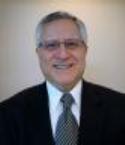Prof. Mohamed A. El-Sharkawi

Biography:
Mohamed A. El-Sharkawi is a Fellow of IEEE. He received his BSc in Electrical Engineering from Cairo High Institute of Technology (currently, Helwan University) in 1971, and his PhD in Electrical Engineering from the University of British Columbia in 1980. In 1980, he joined the University of Washington, as a faculty member, where he is presently a Professor of Electrical Engineering. He also served as the Associate Chair, the Chairman of Graduate Studies and Research; and the Chairman of Promotion and Tenure.
Professor El-Sharkawi served as the Vice-President for Technical Activities of the IEEE Computational Intelligence Society. He is currently the Chairman of the IEEE Subcommittee on Renewable Energy Machines and Systems, IEEE awards subcommittee, and IEEE fellows subcommittee.
He is the founding chairman of numerous IEEE task forces, working groups and subcommittees. He organized and chaired numerous panels and special sessions in IEEE, and other professional organizations. He organized and taught several international tutorials on intelligent systems applications, energy management systems, renewable energy, integration of wind systems, electric safety, forecasting, vulnerability assessment, VAR management, and power systems operations.
He is the founder/co-founder and chair of several conferences, including the International Conference on the Application of Neural Networks to Power Systems (ANNPS), Intelligent Systems Applications to Power (ISAP), the Northwest Energy System Symposium (NWESS). He is also a member of the organizing committees of numerous regional and international conferences.
Professor El-Sharkawi is a member of the editorial boards, and is associate editor of several journals. He served as editor/co-editor of several IEEE tutorial books on Intelligent Systems and Heuristic Optimization. He published over 250 papers and book chapters in his research areas. He authored three textbooks on Fundamentals of Electric Drives, Electric Energy: An Introduction, and Electric safety. He also authored and co-authored 4 research books in the area of intelligent systems. He holds 5 licensed patents in the area of renewable energy VAR management, and minimum arc sequential circuit breaker switching.
Professor El-Sharkawi served as an external evaluator for several engineering schools and research programs in the Middle East. He is also an expert witness in the areas of electric safety, system?s operation and control, power systems, and renewable energy.
Abstract:
Smart Grid: the Future Power System
Mohamed A. El-Sharkawi
Department of Electrical Engineering
University of Washington
Seattle, WA 98195
http://SmartnergyLab.com
The primary role of the existing power grids is to deliver energy to the end users by provide the vital links between the producers of the electric energy and the consumers. These grids have served their purpose with great success for many decades mainly because they were developed to meet the needs of large and predominantly carbon‐based energy producers located remotely from the load centers.
Nowadays, the world is striving at developing lower-carbon generation technologies as well as higher efficiency devices and systems. This societal demand has led to a rapid change in the generation landscape because of the increasing penetration of renewable energy systems and the emerging of several microgrids. The current and future developments in renewable energy can only succeed if the customers are allowed to interact with the grid by becoming suppliers as well as users of electric energy.
These fundamental changes will require the distribution grid to become more vibrant and interactive which will demand significant changes in the grid design, operation, protection and control. In addition, the grid must become flexible enough to allow new technologies and systems to be installed and operated without significant or expensive regulatory procedures. The key role of the Smart Grids is to achieve these goals.
Beside the usage of more environmentally compatible generations, the Smart Grid will reduce the transmission congestions and blackouts, reduce peak demands, increase system capacity, reduce restoration time, implement self-diagnosis and self-healing techniques, increase security and tolerance to attacks or natural disasters, and increase environmental benefits.
To build a smart grid, several innovations need to be developed or implemented including advanced sensing, communication, routing, protection, and control technologies. These technologies encompass generation, transmission and distribution systems as well as consumer appliances and equipment.